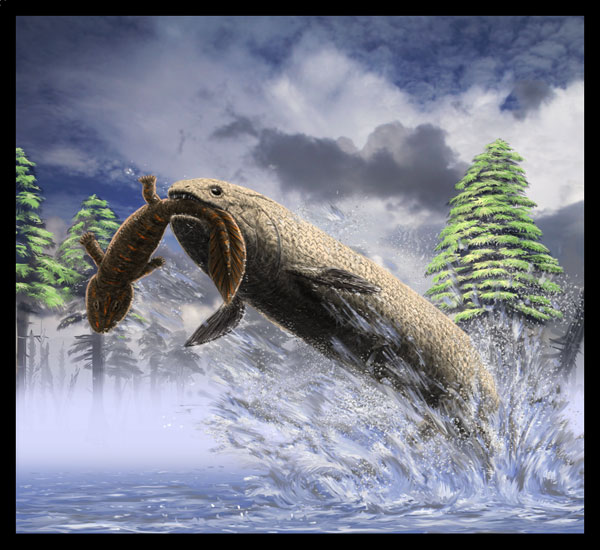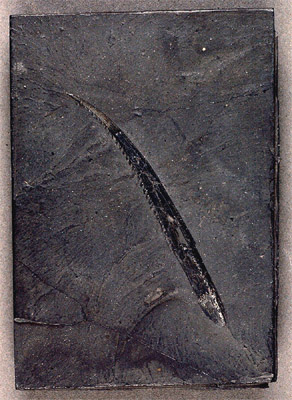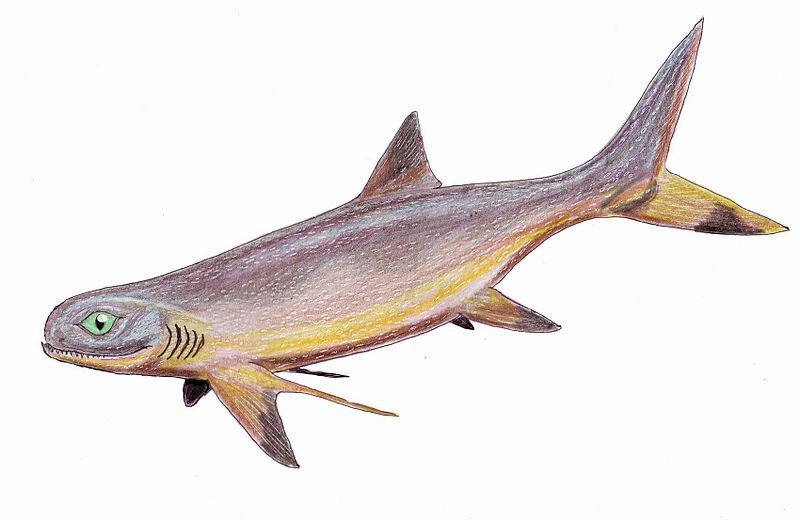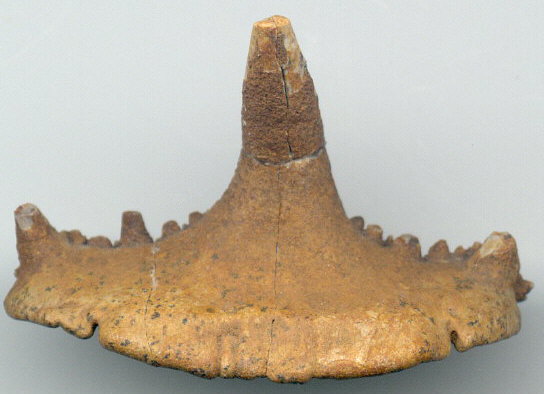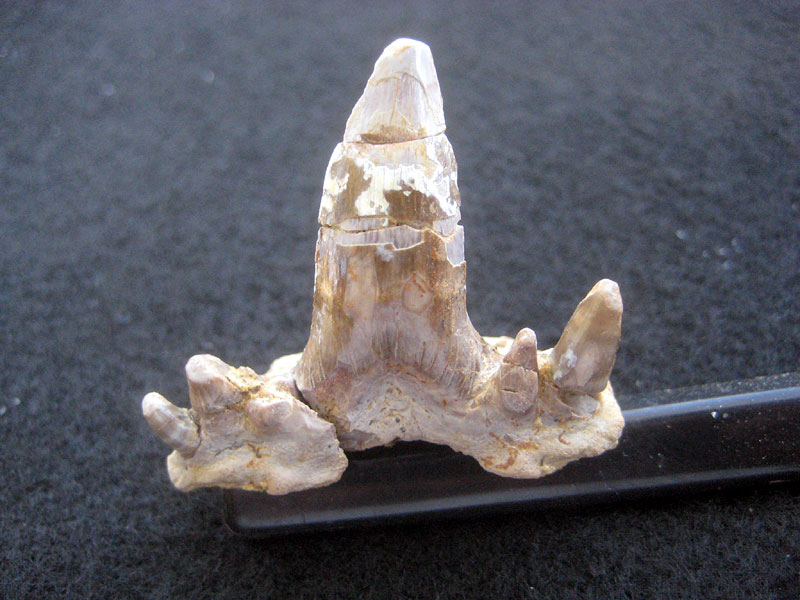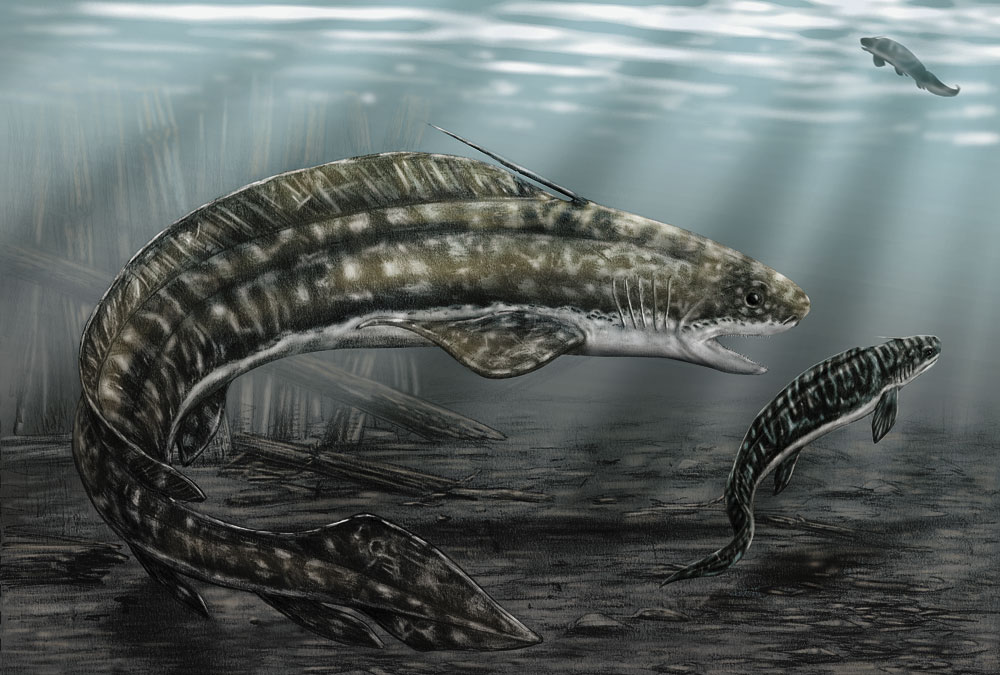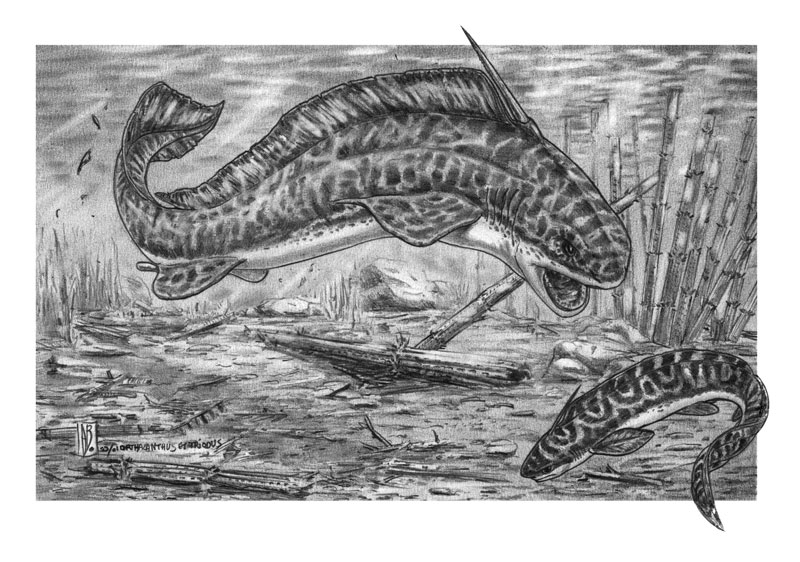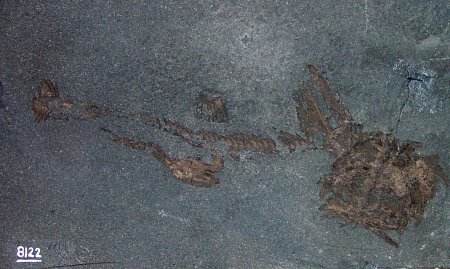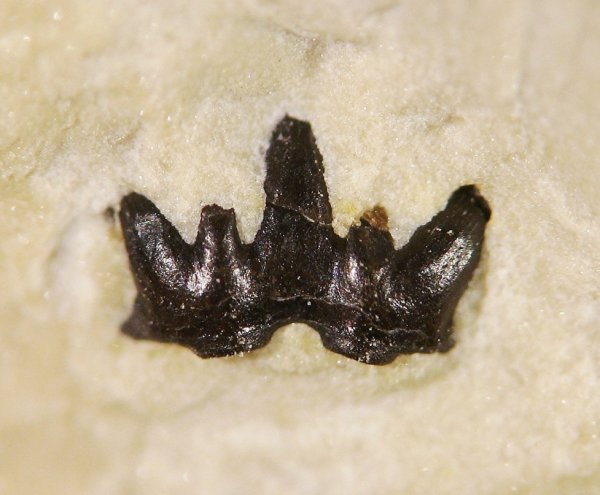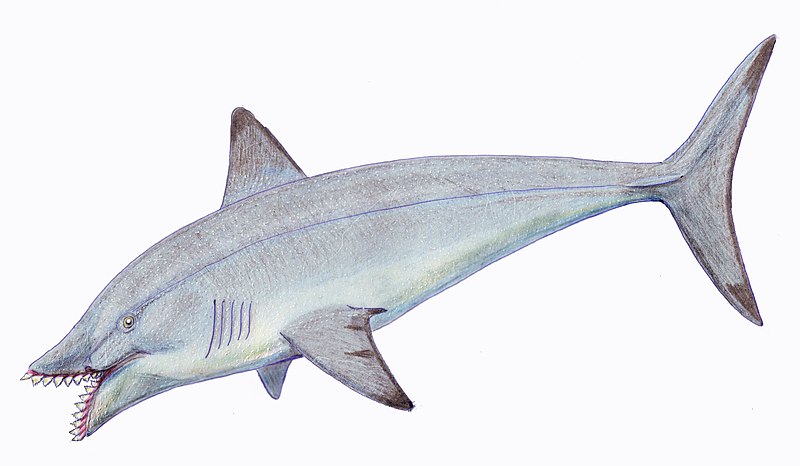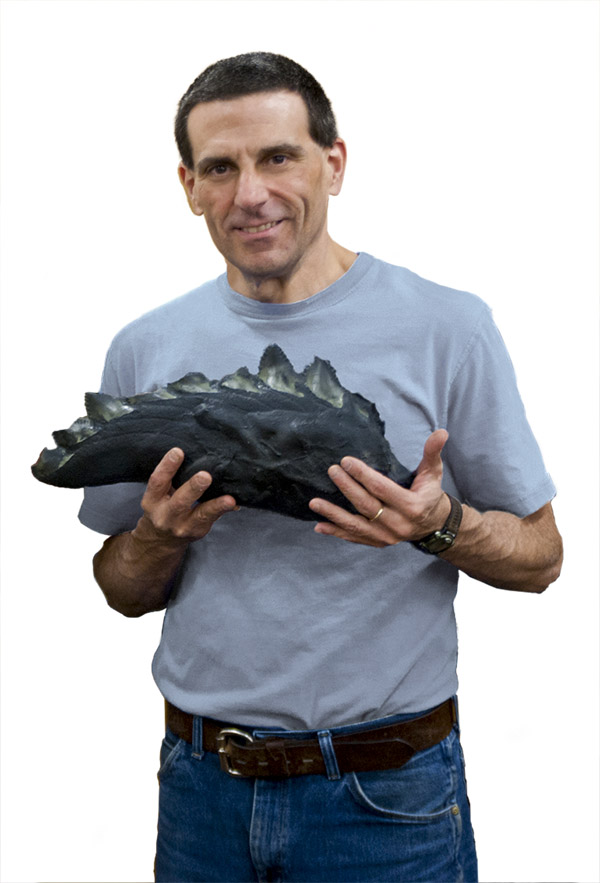[Recent Entries][Archive][Friends][User Info]
Below are 20 entries, after skipping 40 most recent ones in the "Сообщество, посвящённое ра" journal:[<< Previous 20 entries -- Next 20 entries >>]
| October 3rd, 2011 | |
|---|---|
| 10:24 pm [industrialterro] [Link] |
Chenoprosopus Chenoprosopus is an extinct genus of temnospondyl amphibian. Chenoprosopus resembles the European genus, Archegosaurus. Of the Permian amphibia found in the United States, Chenoprosopus most resembles Cacops though it differs in the smaller nostrils and in their posterior position. In 1911, Mr Paul Miller discovered in New Mexico part of the skull of a new species of Chenoprosopus and gave it the name Chenoprosopus milleri. The skull was long and narrow, 28 cm (11.0 in) long and 5.4 cm (2.1 in) wide. The teeth were stout and conical, slightly recurved and about 19 mm (0.7 in) long. A single vertebra was also found at the site and this resembled the vertebrae of Diadectes.
Tags: Вымершие амфибии, Карбон, Лабиринтодонты, Темноспондилы |
| 10:19 pm [industrialterro] [Link] |
Capetus Капетус (Capetus palustris) – примитивный темноспондил каменноугольной эпохи. Известен преимущественно по фрагментам черепов. Крупное животное, с черепом до 40 см длиной, общая длина могла быть больше 1,6 метра. Череп напоминает череп аллигатора – с не очень длинной закругленной мордой, довольно высокий. Зубы крупные, немногочисленные. Капетус не может быть отнесен ни к одному из семейств темноспондилов, поскольку практически не имеет особенных черт строения. Судя по черепу, это был полуназемный или наземный хищник. Описан в 1938 году Стином из позднекаменноугольных (вестфал Д) отложений Нирани в Чешской республике. Синоним – Gaudrya latistoma, первые найденные остатки относили к родам Sclerocephalus и Chelydosaurus (из эриопоидов). Капетус был одним из доминирующих хищников своего времени и места. Он делил местообитание со сходным по размерам кохлеозавром, который, тем не менее, был преимущественно водным животным.
Tags: Вымершие амфибии, Карбон, Лабиринтодонты, Темноспондилы |
| 10:09 pm [industrialterro] [Link] |
Brachydectes Brachydectes is an extinct genus of lysorophian amphibian that lived from the Carboniferous.
Tags: Вымершие амфибии, Карбон, Лабиринтодонты, Лепоспондилы |
| 10:00 pm [industrialterro] [Link] |
Balanerpeton Balanerpeton is an extinct genus of temnospondyl amphibian from the Early Carboniferous period. It reached approximately 50 cm (20 in) in size. Balanerpeton woodi was discovered by Stanley Wood and is the earliest and most common tetrapod in the East Kirkton Quarry assemblage of terrestrial amphibians in Scotland. Characteristics of Balanerpeton woodi include the presence of large external nares, large interpterygoid vacuities and an ear with a tympanic membrane and rod-like stapes. The morphology of the stapes suggests that the animal was capable of hearing high-frequency sound. B. woodi does not possess lateral line sulci or an ossified branchial system. The principal method of respiration was probably buccal (gulping air through mouth) rather than costal (expanding chest volume to take in air), indicated by the small straight ribs.
Tags: Вымершие амфибии, Карбон, Лабиринтодонты, Темноспондилы |
| 09:57 pm [industrialterro] [Link] |
Amphibamus Amphibamus is a genus of amphibamid temnospondyl amphibian from the Carboniferous (middle Pennsylvanian) of Europe and North America.
Tags: Вымершие амфибии, Карбон, Лабиринтодонты, Темноспондилы |
| 09:33 pm [industrialterro] [Link] |
Crassigyrinus Крассигиринус (Crassigyrinus scoticus) — примитивное четвероногое («земноводное») начала каменноугольной эпохи. Систематическое положение крассигиринуса неясно, он не относится к темноспондилам, возможно, относится к антракозаврам, но имеет черты и тех, и других. У крассигиринуса высокий череп с короткой мордой. Орбиты четырехугольные, вынесены вверх, направлены вбок. Поверхность костей черепа обильно скульптирована (высказано предположение, что череп мог быть покрыт кожными выростами для маскировки). Есть подвижное сочленение между щеками и крышей черепа (как у антракозавров). Имеется «ушная вырезка», вмещавшая брызгальце. Небо примитивное, как у рипидистий. Очень мощные зубы на нёбе. На передней поверхности черепа, между предчелюстными костями, расположено грушевидное отверстие, связанное с передним небным окном. Одно время предполагалось, что ниже ноздрей было отверстие для чувствительного щупальца (как у червяг), но сейчас доказано, что это ошибка. На нижней челюсти есть большие отверстия, в которые при закрытой пасти входили концы нёбных клыков. Скелет слабый, тело длинное, передние конечности крайне малы (длина плеча меньше диаметра орбиты), задние длиннее передних. Число пальцев точно не известно. Длина достигала 1,5—2 метров. Несомненно, крассигиринус был хищником, одним из самых сильных хищников своей эпохи. Он обитал в болотах и заросших мелких водоемах, подстерегая добычу в мутной воде. Несмотря на свою примитивность, это — вторичноводное животное. Крассигиринус был описан по фрагментам челюстей Д. Уотсоном в 1929 году, а первые его остатки были обнаружены еще в XIX веке. Все остатки происходят из раннего карбона (визей) Шотландии. Современное описание выполнено в 1980—1990-х годах.
Tags: Вымершие амфибии, Ихтиостегалии, Карбон, Лабиринтодонты |
| October 2nd, 2011 | |
| 05:16 pm [industrialterro] [Link] |
Platysomus Platysomus is an extinct genus of ray-finned fish that lived in the Carboniferous and Permian periods. Fossils have been found worldwide. Platysomus was about 18 centimetres (7.1 in) long, and shaped similarly to the discus fish, having the same flattened body and alongated dorsal and anal fins. Its jaws were placed vertically under the braincase, giving it a wide gape. Platysomus is thought to have fed on plankton, and lived in both fresh and salt water.
Ископаемые останки (1, 2, 3, 4):
Tags: Вымершие рыбы, Карбон, Лучепёрые |
| 05:04 pm [industrialterro] [Link] |
Paramblypterus Paramblypterus is an extinct genus of prehistoric bony fish. This is a very well-preserved example of a Paleoniscoid fish known as Paramblypterus. The paleoniscoids were the first ray-finned fish, a feature readily seen here. Some 40 or more families appeared during the Carboniferous and Permian Periods. This genus went extinct during the Lower Permian. Notice the details in the rhombic scales and the heterocercal caudal fin. Specimens are no longer being quarried from the region, so acquisition from older collections such as this one are the only way to add a fine example such as this to your collection.
Ископаемые останки (1, 2, 3, 4, 5):
Tags: Вымершие рыбы, Карбон, Лучепёрые |
| 04:30 pm [industrialterro] [Link] |
Rhizodus Rhizodus is an extinct genus of a rhizodont, a branch of the Sarcopterygii, the bony vertebrate clade that also includes tetrapods. Rhizodus hibberti! Считают , что это крупнейшея пресноводная рыба с зубами как у Тирекса. Найдена в Шотландии, находке 300млн лет, она могла весить до 2 тонн. Been hunting Coal-Age predators in Scotland. My oh my! I've been in the UK for two weeks - sorry for not keeping up with any new updates. I really have to start investing in some serious internet time or wireless when I'm on the road, otherwise the content of this site (and consequently the visitors) tapers off rather quickly! So, here's what's been up:
7 - 8 метров в длину, однако. Не хрен собачий:
Ископаемые останки (1, 2, 3, 4, 5, 6):
Tags: Вымершие рыбы, Карбон, Лопастепёрые |
| 04:21 pm [industrialterro] [Link] |
Tristychius Tristychius is an extinct genus of shark from the Carboniferous period. Fossils have been found in Scotland. Tristychius was a small shark, about 60 centimetres (2 ft) long. It had a well-developed upturned caudal fin, similar to that of many modern sharks. Physically it may have resembled a modern dogfish. Tristychius also had spikes attached to the bases of its dorsal fins, probably for protection against predators.
Tags: Вымершие рыбы, Карбон, Хрящевые |
| 04:10 pm [industrialterro] [Link] |
Symmorium Symmorium is an extinct genus of stethacanthid shark. Symmorium is very similar in size and appearance to Stethacanthus, but is missing the spine with brush on its back. Some scientists think that Symmorium is actually a female Stethacanthus, while other scientists think Symmorium is a different group of shark, separate from Stethacanthus.
Ископаемые останки (1, 2, 3, 4):
Tags: Вымершие рыбы, Карбон, Хрящевые |
| 04:00 pm [industrialterro] [Link] |
Sphenacanthus Sphenacanthus is an extinct genus of shark which lived in the Early Carboniferous of Scotland. It may also look like a big fish, but it is really a shark. It lived about 359 million years ago. It was one of the first sharks to ever live. But it was not the first shark. Sphenacanthus also hunted fish that lived in the carboniferous. Because water creatures were the only living life forms on Earth. Sphenacathus was a freshwater shark. Sphenacanthus had a fish like body with 7 fins, 2 on the top and 5 on the bottom. No one knows how big they could get but they were rather large. Sphenacanthus' home was probably what now is known as Scotland. It shared its freshwater home with lots of other sharks, like 'Xenacantus'. This was also a freshwater shark. But it was only about a meter long.
Tags: Вымершие рыбы, Карбон, Хрящевые |
| 03:40 pm [industrialterro] [Link] |
Orthacanthus Orthacanthus is an extinct genus of fresh-water shark from a family of prehistoric sharks known as Xenacanths. Members of the genus had a long spine growing from the back of their skull and a very long dorsal fin, which ran all along its back giving it an eel-like appearance. About 260 million years ago, Orthacanthus was the terror of freshwater swamps and bayous in Europe and North America. Its body reached nearly 10 feet (3 meters) in length and its powerful jaws were lined with double-fanged teeth. They first appeared almost 400 million years ago in the Devonian, and became extinct just before the Mesozoic, about 225 million years ago. Orthacanthus достигал 4,5 метра в длину.
Ископаемые останки (1, 2, 3, 4, 5, 6):
Tags: Вымершие рыбы, Карбон, Хрящевые |
| 03:29 pm [industrialterro] [Link] |
Iniopteryx Iniopteryx ("Nape Wing") is an extinct genus of cartilaginous fish. It is from the Pennsylvanian epoch of the Carboniferous period, approximately 300 million years ago. Their fossils have been found in North America, primarily in two states: Ohio and Montana. In general, very little is known about this species. Iniopteryx was a plump, small-sized chimaera-like fish. It is known that the species average size was around half a meter long in length. While the species had specialized spines and fins similar to that of a flying fish. It is possible that it could glide through the air just like them. However, it is accepted by Scientists and Paleontologists that Iniopteryx was indeed a fish that was the bottom-dwelling kind.
Tags: Вымершие рыбы, Карбон, Хрящевые |
| 03:22 pm [industrialterro] [Link] |
Harpagofututor Harpagofututor is an extinct genus of cartilaginous fish from the Mississippian of North America. It was an eel-shaped fish with almost no scales. About eight inches long, it swam with some help from its fins, but also relied on whole-body locomotion to move. The fish also had teeth sufficient for eating shellfish. Harpagofututor is thought to be related to the cochliodonts, chimaeroids, and Chondrenchelys problematica. The fish was discovered in the 1980s in Montana's Bear Gulch area by Adelphi University palaeontologist Richard Lund, who has been exploring the limestone formations of the region since 1969. The area was thought to be the location of a shallow bay. Fish remains are found throughout the area. Further examinations of the soft tissue pigments of these fossilized remains led to more information about the fish and information about its internal organs, including its reproductive system.
Tags: Вымершие рыбы, Карбон, Хрящевые |
| October 1st, 2011 | |
| 08:12 pm [industrialterro] [Link] |
Glikmanius Glikmanius (formerly Cladodus) is an extinct genus of shark which lived in the Carboniferous of North America and Russia. The genus is based on a whole specimen from Nebraska, USA. Glikmanius is named in honour of the Russian palaeontologist, Dr. Leonid Glikman, who studied the genus and was "the first to propose its ctenacanthiform affinity".
Ископаемые останки (1, 2, 3, 4):
Tags: Вымершие рыбы, Карбон, Хрящевые |
| 08:04 pm [industrialterro] [Link] |
Falcatus Falcatus is an extinct genus of Falcatidae which lived during the early Carboniferous Period in Bear Gulch bay and what is now Missouri. It was a 25-30 cm or 10-12 inches long "cladodont-toothed stethacanthid shark". The first material known from the genus were the prominent fin spines that curved anteriorly over the head of the animal. When first described in 1883 from the St. Louis Limestone, these remains were given the name Physonemus falcatus. However, in 1985, fossils of a new type of condrichthyan from Montana were described that displayed a high degree of sexual dimorphism. The same spines that were previously named P. falcatus were found on one of the morphs, identified as the male due to the presence of valvae. As a result the present generic name was constructed for the species as well as the related F. hamatus and F. proclivus.
Tags: Вымершие рыбы, Карбон, Хрящевые |
| 07:42 pm [industrialterro] [Link] |
Edestus Эдестус или эдест (Edestus) — род хрящевых рыб каменноугольной эпохи. Является дальним родственником геликоприона, относится к отряду эвгенеодонтов. Известен в основном по находкам зубов и челюстей. Имел две зубные «дуги», возможно, росшие на симфизах верхней и нижней челюсти. Вероятно, дуги торчали далеко вперед из пасти. Самые старые зубы находились у конца дуги, молодые — у ее основания. В отличие от геликоприона, зубная «спираль» не образовывалась. Коронки зубов на дугах расширены у основания, так называемые «шпоры» направлены назад. Истинное положение зубных дуг достоверно не известно, есть мнение, что это глоточные зубы. Судя по всему, рыба выглядела так, словно на морде у нее растут зазубренные ножницы. Назначение столь неуклюжего зубного аппарата остается совершенно непонятным. Интересно, что боковые («обычные») зубы часто описывают как давящие, хотя их могло вообще не быть. Неясно, могли ли дуги плотно смыкаться. Предполагается, что эдестус был хищником. Он даже сравнивается с современными ламноидными акулами (тахипелагический охотник за крупной добычей). Если так, то это самая крупная хищная рыба своего времени. Судя по остаткам вида Edestus giganteus (поздний карбон Северной Америки — Оклахома), длина эдестуса могла доходить до 6 метров. Высота зубных коронок этого вида доходит до 8 см. Всего описано примерно 5 видов, из среднего карбона — ранней перми Европы (в том числе России) и Северной Америки. Синонимы рода — Edestodus, Protospirata. Edestus giganteus, (also known as the "scissor-tooth shark") lived in the oceans during the Late Carboniferous (306-299 million years ago). Little is known about E. giganteus apart from a single set of teeth currently housed in the American Museum of Natural History in New York City. Paleontological studies suggest that E. giganteus, unlike modern-day sharks, did not shed worn or broken teeth. Rather, it continued growing new teeth and gums near the back of the mouth, eventually pushing the older teeth and gums forward, until they protruded from the mouth. It is not clear what function the strange teeth performed. E. giganteus grew to about the size of the modern-day great white shark, thus probably making it one of the top sea predators of its day. As with all other members of the genus, it is not clear how E. giganteus caught or ate its prey, however.
Ископаемые останки (1, 2, 3, 4, 5, 6):
Tags: Вымершие рыбы, Карбон, Хрящевые |
| 07:24 pm [industrialterro] [Link] |
Echinochimaera Echinochimaera is an extinct genus of fish, it was assigned to the order chimaera by Jack Sepkoski in 2002. The genus' name derives from the Greek εχινό (echino) meaning spiny, and chimaera. The two known Echinochimaera species lived in the Upper Mississippian (Serpukhovian). Fossils of the species were found in the Bear Gulch Limestone in Montana, United States. Both species have rounded bodies and paddle-like tails as well as large pectoral fins, two dorsal fins and a jaw fused to the braincase. The paddle-like tails indicate that E. meltoni was likely not a predator nor a fast swimmer. Echinochimaera meltoni: E. meltoni was first described by Richard Lund, a Adelphi University palaeontologist, in 1977. The fossils found of E. meltoni have shown a great deal of sexual dimorphism, males being found to have a maximum 150mm body length while the maximum body length found in females was only 70mm (juveniles were 13-20mm). In general, the females only grew to about half the size of the males. Males also had four pairs of spikes which may have been used to defend against predators and to identify the fish as male. There was a relative abundance of immature male fossils found, and that together with the significant sexual dimorphism indicate there was extreme sexual selection among the species. Echinochimaera snyderi: E. snyderi was described, like E. meltoni, by Richard Lund. It was described in 1988 based on juvenile specimens, all with a body length under 90mm. E. snyderi differs from E. meltoni in fin detail as well as jaw shape and teeth near the front edge of the face rather than a tooth plate, in mature specimens later found its mature size was found to be larger than E. meltoni.
Tags: Вымершие рыбы, Карбон, Хрящевые |
| 07:18 pm [industrialterro] [Link] |
Deltoptychius Deltoptychius is an extinct species of cartaliginous fish related to the modern chimaeras. It lived in the Carboniferous period of present-day Europe. Although it emerged over 300 million years ago, Deltoptychius was similar in appearance to modern-day chimaeras, possessing a long, whip-like tail and large, wing-like pectoral fins that it probably used to glide through the water. Deltoptychius`s large eyes allowed it to hunt in deep waters, crushing shellfish between solid tooth plates in its mouth.
Tags: Вымершие рыбы, Карбон, Хрящевые |






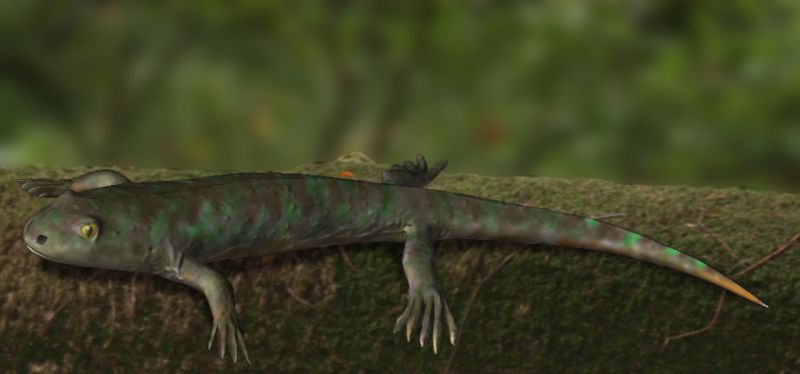











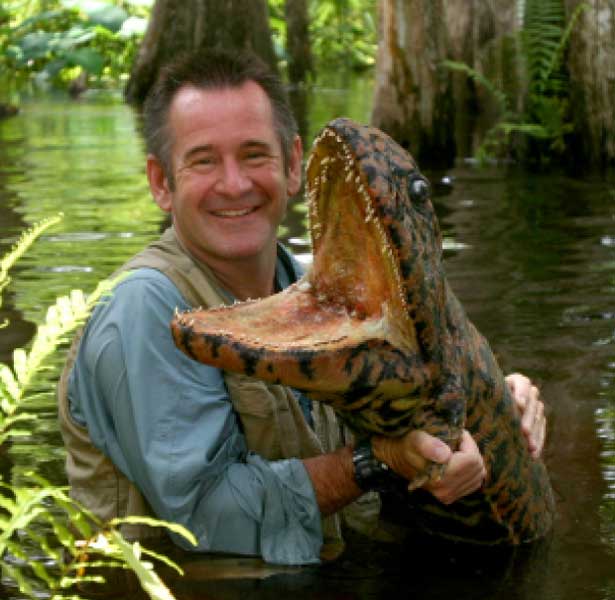

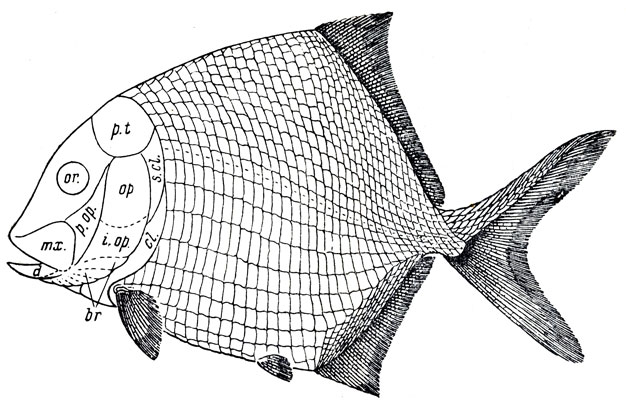












/Rhizodus_1.jpg)
